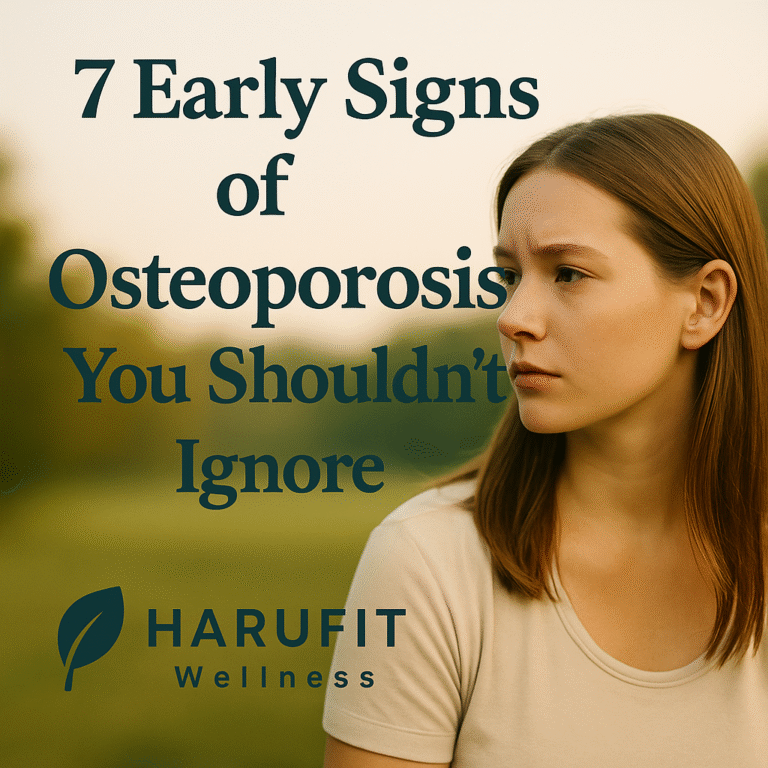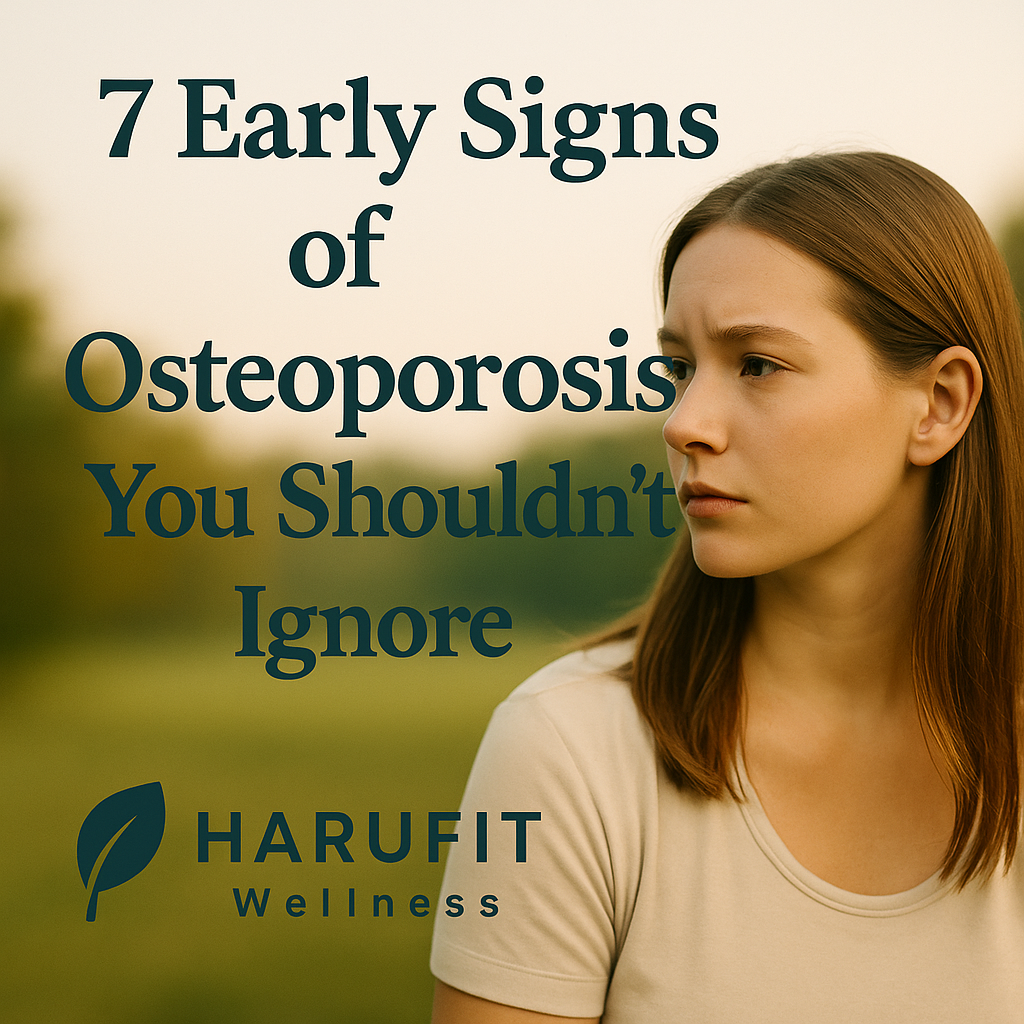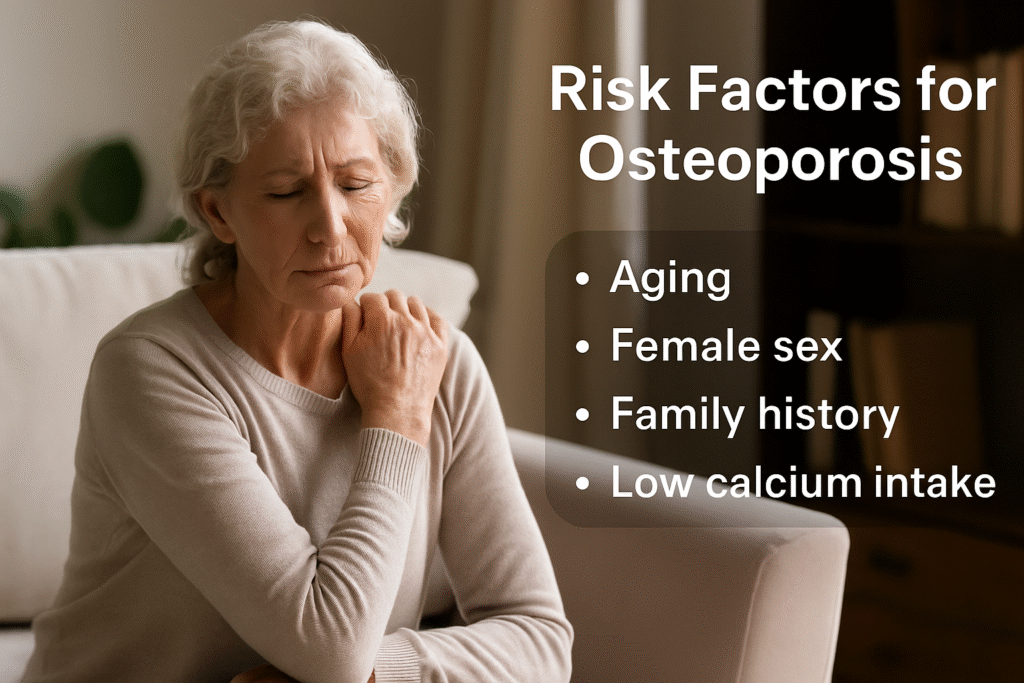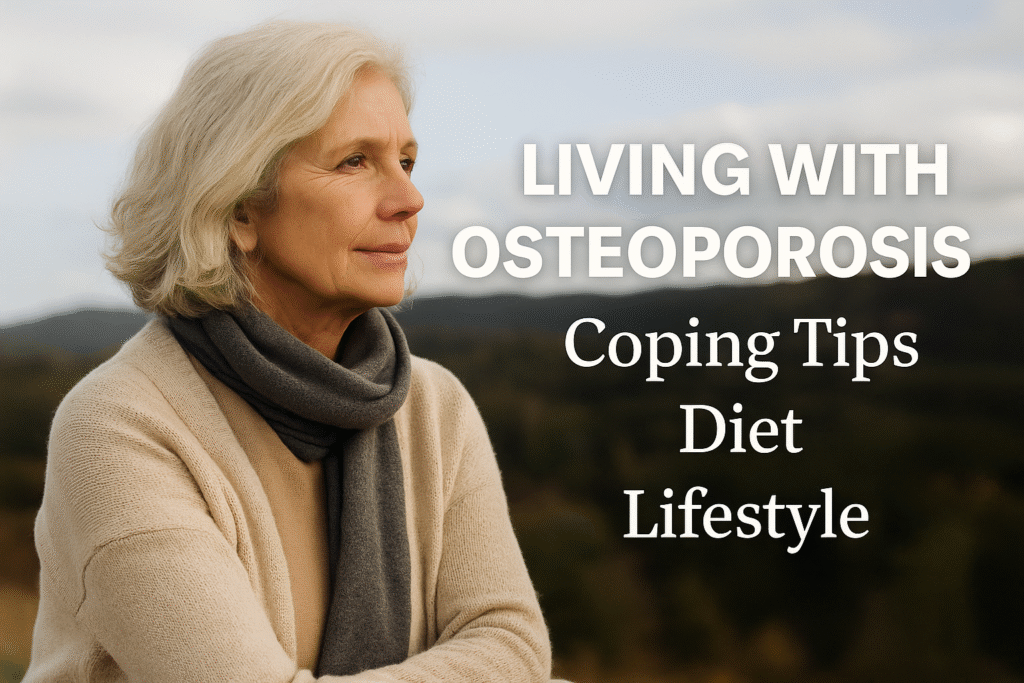7 Early Signs of Osteoporosis You Shouldn’t Ignore

7 early osteoporosis warning signs you shouldn't ignore - bone health matters at every age, especially in your 20s and 30s

Here’s something most people don’t realize—osteoporosis has been quietly doing damage for years before you notice anything’s wrong. Most folks think this is strictly an “older person problem,” but your bones actually hit their peak strength in your twenties and thirties.
By the time you’re dealing with actual broken bones, you’ve already lost a significant amount of bone density. Recognizing these early warning signs could literally be the difference between staying active and dealing with serious fractures down the road.
🚨 1. Back Pain That Won’t Let Up
We’re not talking about your typical “slept wrong” or “too much desk time” soreness. This is persistent, nagging pain that keeps coming back no matter what you try.
What’s actually happening: Tiny compression fractures are developing in your spine without you knowing it. Research shows that vertebral compression fractures are often the first red flag of osteoporosis, sometimes appearing before bone density tests show major problems. If you’re constantly reaching for pain relievers, your bones might be trying to tell you something.
📏 2. Getting Shorter? That’s Not Normal
Can’t reach stuff you used to? Your pants suddenly seem longer? Even losing half an inch can signal that your vertebrae are literally compressing due to bone loss.
Most people don’t catch this until they get measured at a doctor’s appointment and have that “wait, what?” moment. By the time height loss becomes noticeable, significant spinal damage has already occurred.

💪 3. Grip Strength Going Downhill Fast
Struggling with pickle jars? Your handshake feeling weaker than it used to? Nails breaking constantly despite taking good care of them?
Here’s what research tells us: Multiple studies have established a strong correlation between handgrip strength and bone mineral density, particularly in the lumbar spine. Your hands and wrists contain numerous small bones that are often among the first to show signs of osteoporosis. It’s like your body’s early warning system.
🤸♀️ 4. Posture Going South
That forward head posture and rounded shoulders aren’t always just from too much screen time. When spine bones start losing density, they literally can’t support your body weight properly anymore.
The medical reality: We’re talking about actual structural changes where bones become too weak to maintain normal spinal alignment. That classic “dowager’s hump” associated with aging? It starts with these subtle postural shifts that happen years earlier as vertebrae gradually weaken.
💥 5. Breaking Bones from Minor Accidents
Broke your wrist tripping over your dog? Fractured your ankle slipping on wet bathroom tiles? Healthy bones shouldn’t snap from everyday mishaps like these.
The clinical evidence is clear: These “fragility fractures” from low-impact falls are major red flags that bone density has dropped to dangerous levels. Medical research consistently shows that people who break bones from minor accidents have significantly higher rates of underlying osteoporosis. Don’t let anyone dismiss these as just “bad luck.”
🔗 6. Joint Stiffness That Sticks Around
Notice your joints feeling more like rusty hinges lately? General stiffness that doesn’t ease up with movement or stretching?
Here’s the connection: When bones weaken, your muscles and joints start overcompensating, leading to persistent stiffness and reduced mobility. This is different from normal age-related stiffness because it tends to stick around and doesn’t improve much with typical remedies. If your body feels like it’s aging faster than it should, bone health might be the underlying issue.
🦷 7. Dental Problems Out of Nowhere
Suddenly dealing with receding gums? Teeth feeling loose? Your dentist mentioning bone loss despite your excellent oral hygiene?
The scientific connection: Clinical studies have established clear links between oral bone loss and systemic osteoporosis throughout the body. Your jawbone is still bone, and it’s often one of the first places osteoporosis shows up. Random dental issues that seem to come out of left field can be your body’s way of sending up warning flares.

✨ What You Can Actually Do About It
The good news: Catching these signs early gives you real power to turn things around. Your bones are living tissue that can rebuild and strengthen when given the right support.
Get Moving (The Right Way) 💃
- Weight-bearing exercises: walking, dancing, hiking
- Resistance training that challenges your muscles
- High-impact activities if your joints can handle them
- Anything that makes your bones work against gravity
Tools That Can Help Your Bone Health Journey
Taking charge of your bone health doesn’t have to be complicated.
Simple tools can make a big difference in tracking your progress and staying consistent with healthy habits.
Add Omega-3s[affiliate link]: We earn from qualifying purchases
Omega-3 fatty acids play a crucial role in bone health and reducing inflammation. If you don’t eat fish regularly, a high-quality fish oil supplement can be a convenient way to support your bone health goals.
Fuel Your Body Smart 🥛
- Greek yogurt (protein + calcium powerhouse)
- Leafy greens (surprisingly calcium-rich)
- Canned fish with soft bones you can eat
- Fortified plant milks and cereals
- While getting nutrients from food is ideal, a high-quality calcium and vitamin D supplement can help fill the gaps in your diet. Many people find it challenging to get the recommended 1,200mg of calcium daily from food alone. [Affiliate link] –We earn from qualifying purchases
Cut Out the Bone Robbers 🚫
- Excessive alcohol consumption
- Smoking (absolute bone density killer)
- Too much caffeine

🎯 Bottom Line: Don’t Wait This Out
Your bones are literally the framework holding everything else together, so they deserve attention before things go sideways.
These seven signs aren’t meant to freak you out—they’re your early warning system giving you a heads up.
⚠️ Important Note: This information is for educational purposes only and absolutely doesn’t replace professional medical advice. If any of these signs hit close to home, don’t just hope they’ll resolve on their own.
💰 Affiliate Disclosure: This post contains affiliate links, which means we may earn a small commission if you make a purchase through these links at no additional cost to you. We only recommend products we believe can genuinely help with bone health management.
Schedule that doctor’s appointment. Ask about bone density testing. Get a prevention plan that actually works for your lifestyle. Early detection and intervention are everything when it comes to keeping your bones strong and keeping you active and independent for decades to come.
Take action now—your future self will thank you for it.
Comments